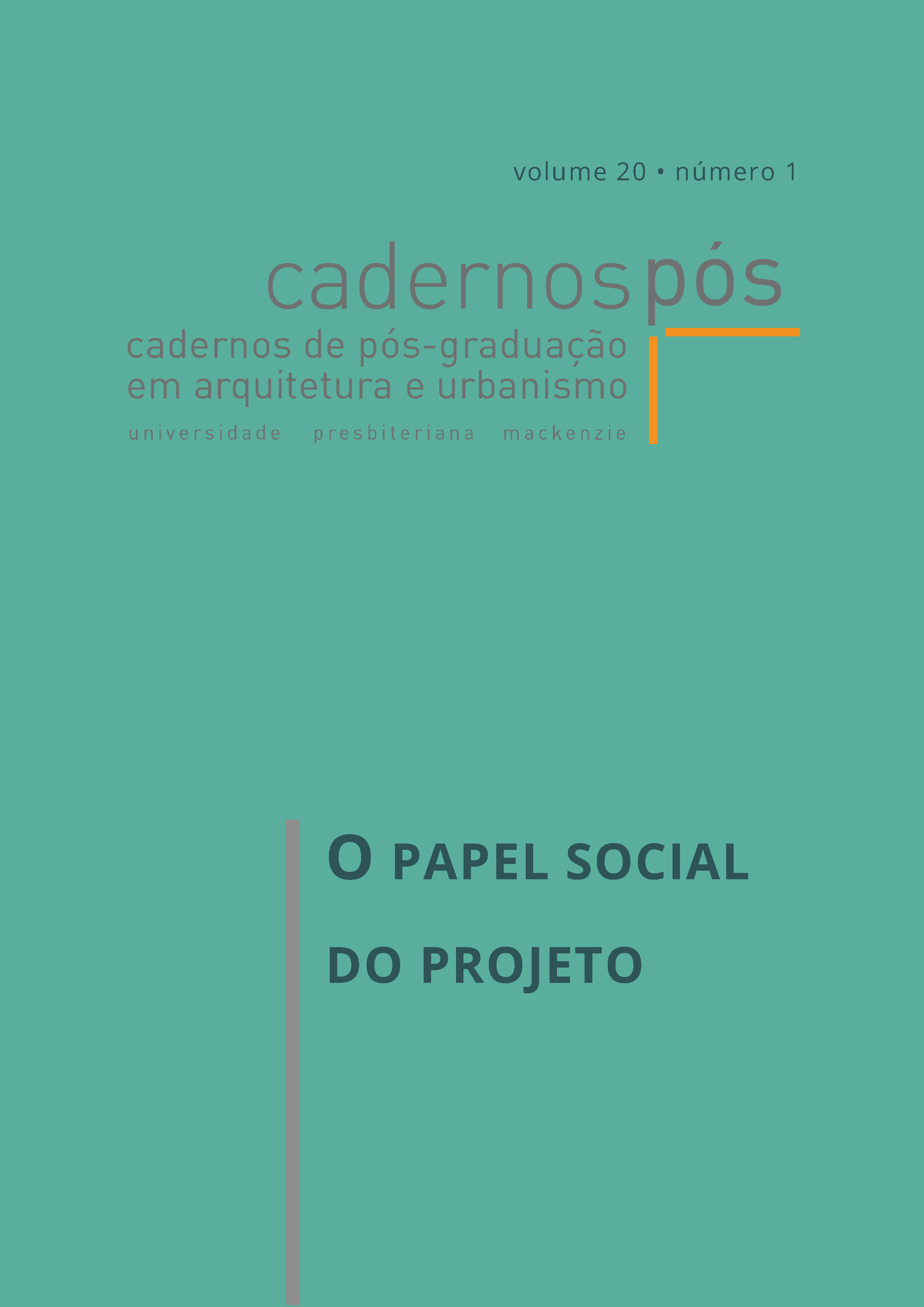Introspective Housin Complexes and Urban Vitality
The Case of Praia de Gaivotas – Vila Velha, ES
DOI:
https://doi.org/10.5935/cadernospos.v20n1p131-147Keywords:
Urban Vitality; Architectural Morphology; Housing Complexes; Public security.Abstract
Introspective housing complexes, segregated from the urban context, closed by high walls and with little relation to the outside, result in an environment that is not inviting to urban vitality and vulnerable to antisocial actions. There is a growth of this model in the city of Vila Velha-ES, such as the Praia das Gaivotas neighborhood, which aroused interest due to the implementation, in recent years, of isolated housing complexes. In this context, this paper analyze the effects of this architectural typology on the urban vitality of a residential neighborhood. It is an applied, exploratory and descriptive research, with a qualitative approach, involving the steps of contextualization, definition of qualitative analysis criteria, physical survey, questionnaire application and analysis. In the research, it is evidenced that the harmony of the spaces, small squares, diversity of uses and visual attractions are essential conditions to qualify the urban space. It´s noteworthy that active façades, with prosperous trade, allow dynamism and break the monotony. It also highlights the need for accessible sidewalks, lighting for pedestrians, public transport infrastructure and the availability of free spaces. It´s possible to observe the importance of work for the awakening of public policies for land use and occupation, with a view to building cities with greater urban vitality.
Downloads
References
ASSOCIAÇÃO BRASILEIRA DE NORMAS TÉCNICAS (ABNT). NBR 9050: Acessibilidade a edificações, mobiliário, espaços e equipamentos urbanos. 2015. Rio de Janeiro, 2015.
BAUMAN, Z. Confiança e medo na cidade. Rio de Janeiro: Zahar, 2009.
BRASIL. Lei n. 6.766, de 19 de dezembro de 1979. Dispõe sobre o Parcelamento do Solo Urbano e dá outras providências. Palácio do Planalto, Brasília, 1979.
CALDEIRA, T. P. do R. Cidade de muros: crime, segregação e cidadania em São Paulo. 3. ed. São Paulo, SP: Edusp: Editora 34, 2011.
GEHL, J. Cidades para pessoas. 2. ed. São Paulo: Perspectiva, 2014.
ITDP Brasil. Instituto de Políticas de Transporte e Desenvolvimento. Índice de Caminhabilidade. Rio de Janeiro, 2018.
JACOBS, J. Morte e vida de grandes cidades. São Paulo: Martins Fontes, 2007.
LIRA, P. S. Geografia do crime e arquitetura do medo: uma análise dialética da criminalidade violenta e das instâncias urbanas. Vitória: GSA, 2014.
NETTO, V. Efeitos da Arquitetura: os impactos da urbanização contemporânea no Brasil. In: NETTO, V. M.; SABOYA R. T., VARGAS, J. C.; CARVALHO T. (orgs.). A cidade como resultado: consequências das escolhas arquitetônicas (pp. 25-49). Brasília: FRBH, 2017.
SABOYA, R T. de. Fatores morfológicos da vitalidade urbana. Parte 1: Densidade de usos e pessoas / Renato T. de Saboya. ArchDaily Brasil, 2016. Disponível em: http://www.archdaily.com.br/br/798436/fatores-morfologicos-da-vitalidade-urbana-nil-parte-1-densidade-de-usos-e-pessoas-renato-t-de-saboya. Acesso em: 11 maio 2017.
SPECK, J. Cidade caminhável. São Paulo: Perspectiva, 2016.
VILA VELHA. Lei complementar n. 65 de 9 de novembro de 2018. Institui a revisão decenal da lei municipal n. 4575/2007 que trata do Plano Diretor Municipal no âmbito do município de Vila Velha e dá outras providências. Vila Velha, Prefeitura Municipal, 2018. Disponível em: http://www.vilavelha.es.gov.br/legislacao/Arquivo/Documents/legislacao/html/C652018.html. Acesso em: 15 jul. 2019.
Downloads
Published
How to Cite
Issue
Section
License
Authors who publish in this journal agree to the following terms:
a) Authors retain the copyright and grant the journal the right of first publication, with the Project simultaneously licensed under the Creative Commons Attribution License that allows the sharing of the Project with recognition of the authorship and initial publication in this journal.
b) Authors are authorized to assume additional contracts separately for the non-exclusive distribution of the version of the Project published in this journal (e.g., publishing in an institutional repository or as a book chapter), indicating that it was originally published in this journal, with a link to the article.








 Todo o conteúdo de Cadernos de Pós-Graduação em Arquitetura e Urbanismo está licenciado sob
Todo o conteúdo de Cadernos de Pós-Graduação em Arquitetura e Urbanismo está licenciado sob 